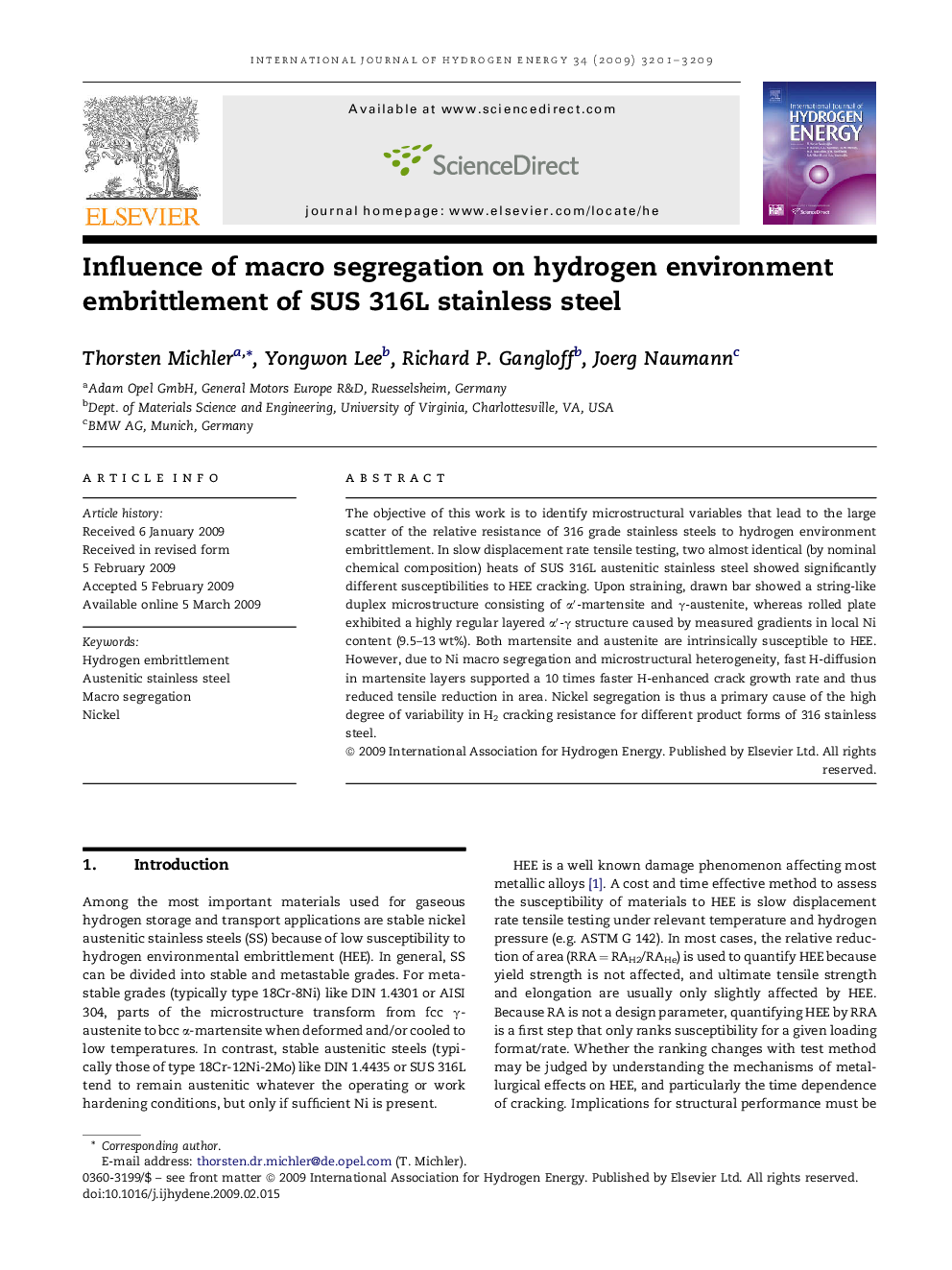| Article ID | Journal | Published Year | Pages | File Type |
|---|---|---|---|---|
| 1283255 | International Journal of Hydrogen Energy | 2009 | 9 Pages |
The objective of this work is to identify microstructural variables that lead to the large scatter of the relative resistance of 316 grade stainless steels to hydrogen environment embrittlement. In slow displacement rate tensile testing, two almost identical (by nominal chemical composition) heats of SUS 316L austenitic stainless steel showed significantly different susceptibilities to HEE cracking. Upon straining, drawn bar showed a string-like duplex microstructure consisting of α′-martensite and γ-austenite, whereas rolled plate exhibited a highly regular layered α′-γ structure caused by measured gradients in local Ni content (9.5–13 wt%). Both martensite and austenite are intrinsically susceptible to HEE. However, due to Ni macro segregation and microstructural heterogeneity, fast H-diffusion in martensite layers supported a 10 times faster H-enhanced crack growth rate and thus reduced tensile reduction in area. Nickel segregation is thus a primary cause of the high degree of variability in H2 cracking resistance for different product forms of 316 stainless steel.
